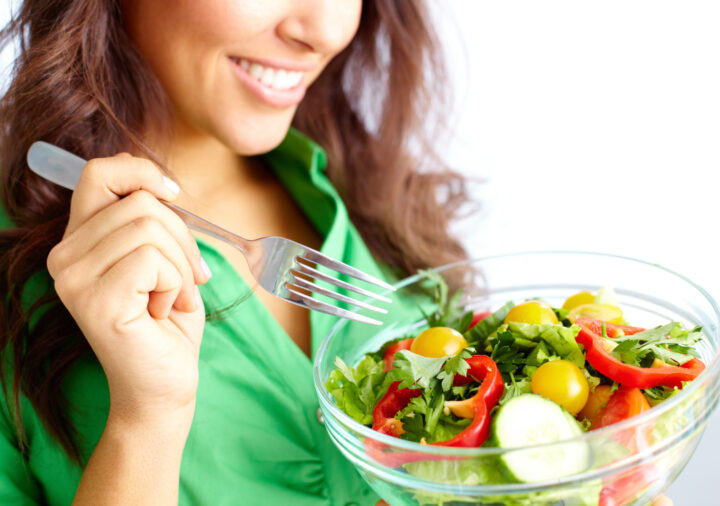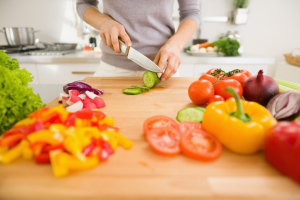
Healthy Eating
[vc_row][vc_column width=”1/1″][vc_column_text el_class=”columns_2″]
Many healthy eating trends have been seen over the years, and every month the media seem to be reporting on the latest superfood, nutritional supplement and fad diet. As consumers we are eager to read about easy ways to lose weight and get fit, without the need to eat salads every day or bother with any strenuous exercise – we want a quick solution to reduce our growing waistlines. But we all know exactly what we should be doing – eating more fruit and vegetables, cutting down on the fried and processed foods and going outdoors for some sunshine and exercise in the fresh air. So why are populations around the world not doing more of this?
 I decided to chat about this apparent conundrum with Ms Aishath Shaheen Ismail, Nutritionist and Dean of the Faculty of Health Sciences at Maldives National University. She explained to me that as Maldivian society has become wealthier, with an increased disposable income, people have turned their backs on the traditional healthier foods of rice, fish and lentil curry. They have moved towards a more Americanised diet of processed high fat foods and sugary drinks, a trend that is affecting many populations worldwide and contributing to escalating levels of obesity and associated chronic health conditions such as diabetes. Shaheen summed this up in a professional sound bite: we are seeing “an increase in non-communicable diseases due to our poor diet and inactive lifestyle”.
I decided to chat about this apparent conundrum with Ms Aishath Shaheen Ismail, Nutritionist and Dean of the Faculty of Health Sciences at Maldives National University. She explained to me that as Maldivian society has become wealthier, with an increased disposable income, people have turned their backs on the traditional healthier foods of rice, fish and lentil curry. They have moved towards a more Americanised diet of processed high fat foods and sugary drinks, a trend that is affecting many populations worldwide and contributing to escalating levels of obesity and associated chronic health conditions such as diabetes. Shaheen summed this up in a professional sound bite: we are seeing “an increase in non-communicable diseases due to our poor diet and inactive lifestyle”.
But it’s not all doom-and-gloom, Shaheen told me. Locally produced fruits and vegetables are on the increase, with Malé market and shops stocking a large variety of healthy produce. Some regional islands have also started to hold weekly “market days”, thanks in part to the introduction of cheap and reliable ferry services several years ago.
The last twenty years have seen considerable agricultural progress in the Maldives, with Seagull Foods developing the island of Maafahi for agricultural use way back in 1996, and later pioneering hydroponic techniques. Today, Seagull Foods is a major grower of fruits (such as papaya and banana) and vegetables (such as butternut squash and salad leaves), supplying both the resorts and customers in Malé.
I recently spoke with Ross Chapman, Executive Chef at Kurumba Maldives. Various herbs and chillies are already being grown on the resort, and he informed me of the increased interest in sourcing locally-grown produce. Kurumba is already switching from mass-produced palm oils to locally made coconut oil, in addition to purchasing the regular supplies of local fresh fish and vegetables. During his career, Ross has experienced the trend of people moving away from red meats in favour of lighter meats and fish, as well as an increased consumption of whole grains and pulses. There is also a greater demand for vegetarian foods, and more specialised meals for guests following gluten-free and lactose-free diets. And in addition, people are becoming increasingly aware of environmental issues such as ‘food miles’ and ‘carbon footprint’, which again is stimulating the industry’s desire to purchase locally.
Another agricultural success story is Island Organics, which has been working hard on the island of Maarikilu since 2007, to pioneer the first organic farm in the country. They supply organic produce to Malé, as well as to the local population and several resorts in Baa atoll. Rather than using imported fertilisers, Island Organics has been transforming the poor quality sandy island soils into fertile farmland by composting waste products and using the manure from chicken and goats. In fact, this whole initiative seems to tick all the current eco-trend boxes: seasonal organic foods, sustainable waste management, low food miles, minimal environmental impact, biological pest control methods and empowered community farming.
Color Your Plate
So given all these healthy foods, how do we actually encourage people to eat more of them? Shaheen told me that Maldivian government education programmes over the years have helped to promote healthier eating. This has included the “Home Garden” programme, where health workers helped communities to start growing their own vegetables, and school “Fruit Days” to improve the food choices of students. The overall improved availability of fresh local fruits and vegetables at competitive prices will also help to increase consumption and improve nutrition through healthier eating.

There are similar ideas and initiatives happening on the resorts. Ross explained how Kurumba offers the largest possible choices of fresh fruit and vegetables to guests, as well as catering for individual dietary requirements. He also told me of a new cooking trend called ‘sous vide’ (which is French for ‘under vacuum’). It’s a method of slow cooking in a low temperature water bath, which requires no added oils and retains moisture and flavour. It’s a simple and standardised way to cater for large numbers of guests, who receive all the benefits of improved natural flavours, lower calories and retained nutritional content without even realising it! And Kurumba’s healthy eating programme doesn’t just stop with the guests, as Ross explained how he’s on a personal mission to improve the eating habits of the resort staff too. He has increased the range of available fresh fruits and vegetables, is moving over to more wholegrain foods and has introduced coconut oil back into the staff kitchens.
I also recently met with Executive Chef Roman Gernoth and Chef Chaminda, at Sheraton Full Moon. Here they are running a simple but effective awareness program called ‘Color Your Plate’, which encourages guests to add different coloured foods into each meal. By eating a variety of vibrant foods, we increase our consumption of essential vitamins, minerals and antioxidants. In addition, the chefs have developed a range of nutritionally balanced meals that use locally-inspired foods and flavours to create a colourful menu that not only looks amazing but is nutritious and delicious too.
Yellow (pineapple, squash): optimize brain functions
Green (avocado, spinach): rejuvenate musculature and bone
Orange (papaya, pumpkin): support skin and eye health
Red (watermelon, tomato): support heart and circulatory health
Purple (berries, eggplant): promote microcirculation
White (onion, garlic): enhance immune and lymphatic systems
[/vc_column_text][/vc_column][/vc_row]





